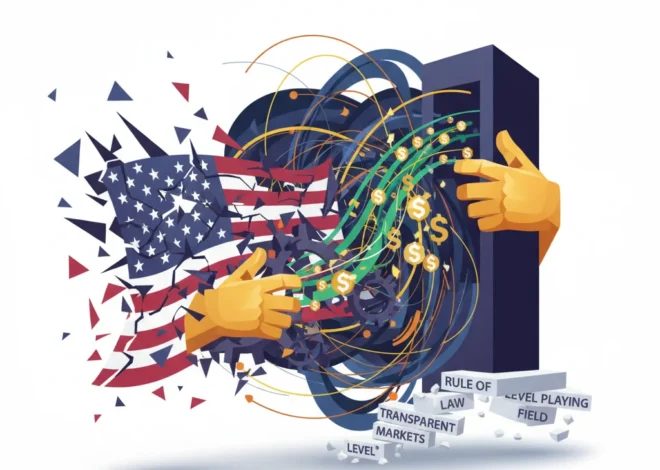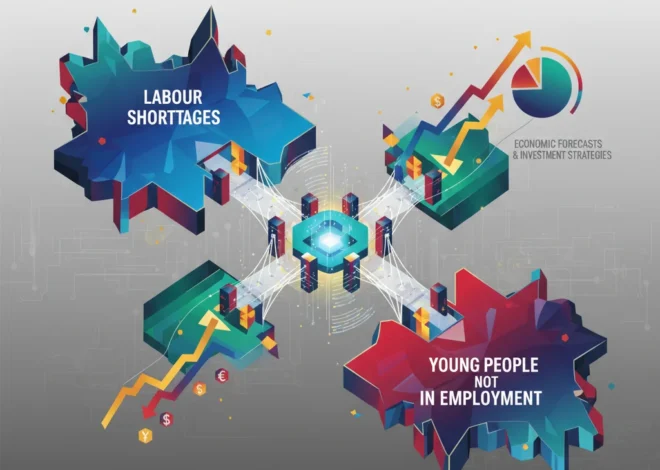
The Bitter Truth: Unwrapping the Complex Economics Behind Your Shrinking Chocolate Bar
The Sweet Treat with a Sour Price Tag
Have you felt it at the checkout line? That subtle, yet undeniable feeling that your favorite guilty pleasure is costing you more and delivering less? You’re not imagining it. The simple joy of a chocolate bar has become the latest, and perhaps most relatable, symbol of our complex global economy. According to official statistics from the UK’s Office for National Statistics, the price of chocolate has surged by a staggering 15% in the last year alone.
But this isn’t just a story about inflation. The shrinking size and rising price of your chocolate bar is a fascinating case study in global finance, commodity trading, supply chain logistics, and corporate strategy. It’s a story that starts on small farms in West Africa and ends on the trading floors of the world’s biggest stock markets. For consumers, investors, and business leaders, unwrapping the reasons behind this phenomenon reveals the intricate and often volatile mechanics of our modern economy.
A Perfect Storm on the Cocoa Market
The primary ingredient, cocoa, is at the heart of the crisis. Over 70% of the world’s cocoa is grown in a small region of West Africa, primarily in Ghana and the Ivory Coast. This geographic concentration makes the entire global supply chain incredibly vulnerable to regional disruptions, and recently, those disruptions have been severe.
A confluence of factors has created a “perfect storm” for cocoa production:
- Adverse Weather: Climate change is no longer an abstract concept; it’s directly impacting crop yields. Heavy rainfall followed by harsh, dry winds associated with the El Niño weather pattern has ravaged cocoa crops. According to the International Cocoa Organization, global cocoa production for the 2023/2024 season is forecast to decline by nearly 11% compared to the previous year.
- Crop Disease: The Cacao Swollen Shoot Virus (CSSV), spread by mealybugs, has been devastating farms. This disease can kill a cocoa tree within a few years, and a lack of investment in disease-resistant crops has left farmers exposed.
- Structural Economic Issues: Many cocoa farmers live in poverty, struggling with aging trees and a lack of access to modern agricultural technology and finance. This underinvestment has led to lower-than-optimal yields for years, a problem now compounded by climate and disease pressures.
These real-world agricultural problems have had a dramatic effect in the world of high-stakes finance. Cocoa is a commodity traded on the futures market, a segment of the stock market where traders buy and sell contracts for the future delivery of goods. As news of poor harvests spread, the price of cocoa futures skyrocketed. In early 2024, cocoa prices on the Intercontinental Exchange (ICE) in New York surged past a record $5,500 per metric ton, more than doubling in just a year. For chocolate manufacturers, this means their single most important raw material has become exponentially more expensive.
UK Economy's Tightrope Walk: A 0.1% Growth in August – Relief or Red Flag?
The Compounding Costs: It’s Not Just the Bean
While the cocoa crisis is the main driver, other economic forces are adding pressure to the final price. A chocolate bar is a manufactured good, and every step of its production process has become more costly due to broad inflationary pressures impacting the global economy.
Let’s break down the major cost components that have been squeezed over the past year.
| Cost Component | Economic Pressure | Impact on Chocolate Production |
|---|---|---|
| Sugar | Poor harvests in major producers like India and Thailand, coupled with increased demand for ethanol production from sugarcane in Brazil. | Sugar prices have hit decade-long highs, significantly increasing the cost of a key ingredient that balances cocoa’s bitterness. |
| Energy | Geopolitical instability and supply chain disruptions impacting global oil and natural gas prices. | Higher energy costs for running factories (roasting, grinding, mixing) and for transportation logistics (shipping raw materials and finished goods). |
| Labor | Tight labor markets and rising wage demands in developed economies where most chocolate is manufactured. | Increased operational costs for manufacturers, which are passed on to consumers. |
| Capital | Higher interest rates set by central banks (like the Federal Reserve and ECB) to combat inflation. | The cost of borrowing money for new equipment, factory upgrades, or research and development has increased, stifling investment. |
This multi-front battle against rising costs puts corporate finance teams in a difficult position. They must protect their profit margins to satisfy investors and maintain a healthy position on the stock market, but they also risk alienating customers with overt price hikes.
Shrinkflation: The Corporate Strategy You Can Feel
Faced with this economic onslaught, companies have turned to a subtle but powerful tool: shrinkflation. This is the practice of reducing the size or quantity of a product while keeping its price the same or increasing it slightly. From a psychological perspective, consumers are often less sensitive to a change in net weight than a jump in the sticker price. It’s a less jarring way to pass on increased costs.
For a publicly traded company, this isn’t just a clever trick; it’s a critical financial maneuver. Maintaining stable or growing profit margins is paramount for stock market performance. A failure to manage rising input costs can lead to poor quarterly earnings reports, which can cause a company’s stock price to fall, hurting investors and making it harder to raise capital. In this context, shrinkflation is a defensive strategy aimed at preserving financial stability in an unstable economic environment.
Beyond the Courtroom: Analyzing the Financial Shockwaves of Johnson & Johnson's Talc Litigation
The Investor’s View and the Fintech Frontier
This entire scenario presents both challenges and opportunities from an investing perspective. The consumer staples sector, which includes food and beverage companies, is traditionally seen as a defensive investment—people buy chocolate in good times and bad. However, this crisis shows that even these giants are not immune to supply chain shocks. Investors must now look deeper into a company’s fundamentals:
- Hedging Strategies: How effectively does the company use financial instruments in commodity trading to lock in prices and protect itself from volatility?
- Supply Chain Diversification: Is the company overly reliant on West Africa, or is it investing in cocoa production in other regions like Latin America or Southeast Asia?
- Pricing Power: Does the company have strong enough brand loyalty to raise prices or enact shrinkflation without losing significant market share?
This is also where financial technology (fintech) and blockchain could become transformative. Imagine a future where a QR code on a chocolate bar could open up a blockchain ledger, showing you exactly which farm the cocoa came from, the price the farmer was paid, and its journey to the factory. This level of transparency could command a premium price and appeal to ESG (Environmental, Social, and Governance) investors. Furthermore, advanced fintech platforms are enabling more sophisticated and automated trading strategies, allowing companies to manage commodity risk with greater precision. Innovations in banking and financial technology could also provide micro-finance solutions directly to farmers, empowering them to invest in more resilient and productive crops, ultimately stabilizing the supply chain at its source.
The Future of Our Favorite Treat
The tale of the shrinking chocolate bar is a potent reminder that we live in a deeply interconnected global economy. A weather pattern in Ghana can influence corporate finance decisions in Pennsylvania, which in turn affects the grocery budget of a family in London. The price of this simple treat is a reflection of climate change, monetary policy, and the ceaseless innovation in financial markets.
Looking ahead, consumers should brace for continued price pressure. Until the structural issues in the cocoa supply chain are addressed through sustainable investment and agricultural innovation, volatility will remain the norm. For those in the world of finance and investing, the chocolate industry has become an unexpected and compelling arena where the principles of risk management, supply chain economics, and the potential of new financial technology are being put to the ultimate test. The next time you unwrap a slightly smaller chocolate bar, take a moment to appreciate the immense and invisible economic forces that delivered it to your hands.


